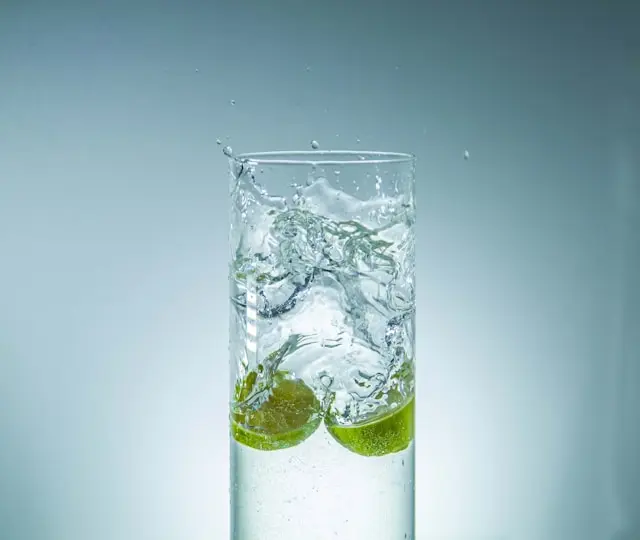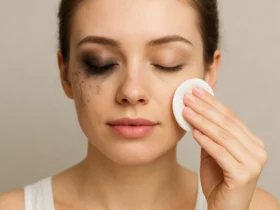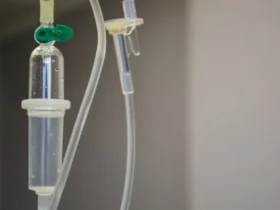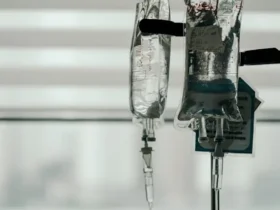Key Takeaways
- Dehydration’s warning signs are often subtle—things like fatigue, headaches, or dry skin easily blend into the background of everyday life.
- Awareness of non-thirst symptoms and understanding risk factors helps you intervene before dehydration impacts your well-being.
- Modern routines, environments, and even dietary choices can quietly drain your fluids if left unchecked.
Why Dehydration Is Often Overlooked
Even though most people associate dehydration with a parched throat and persistent thirst, the majority experience it in more subtle and sneaky ways. The typical work environment—whether an air-conditioned office, busy retail space, or home with central heating—extracts moisture from your body, sometimes without you noticing. When paired with long stretches of screen time, caffeine breaks, and meals on the go, the likelihood of ignoring your body’s call for water climbs dramatically. Research indicates that your water reserves are already below optimal when you feel thirsty. Normal sweat evaporation often goes unnoticed in daily activities, from walking to the store to taking the stairs, meaning you can lose water without sweat.
For individuals recovering from illness, exercise, or jet lag, specialized rehydration methods such as Nevada mobile IV therapy rapidly restore lost fluids and electrolytes. While effective in specific settings, the daily challenge for most people is spotting those less obvious signs of dehydration before reaching the point where medical intervention might be needed. Understanding and responding to early symptoms can minimize risks and optimize energy, cognitive function, and overall health.
Common Symptoms That Fly Under the Radar
It’s easy to attribute headaches to a busy workday, stress, or too much screen time—yet underlying dehydration is a well-documented trigger for head pain. That’s because decreased water means less cushioning and protection for the brain, often resulting in increased sensitivity and discomfort. Similarly, fatigue that settles in by mid-afternoon may be more than just post-lunch drowsiness; water is required to deliver oxygen throughout your bloodstream, and even small deficits can cut down energy or stamina. People often grab another coffee or snack rather than water, unwittingly deepening their body’s fluid debt.
- Headaches: Can appear after a slight drop in fluid intake, and plenty of people turn to medications rather than the simple fix of a glass of water. If headaches are a recurring part of your routine, consider tracking your fluid intake to see if there’s a connection.
- Fatigue and muscle aches: Water helps keep blood flowing efficiently and flushes metabolic byproducts from muscle tissue. Even light exercise or household chores can make muscles feel achy or tired when dehydrated.
- Constipation: Hydration ensures your intestinal tract can move waste freely and comfortably. Without adequate fluids, the colon “recycles” water from waste, making stools dry and difficult to pass. This not only causes discomfort but can also impact nutrient absorption.
- Mood swings and irritability: Even mild fluid loss can throw off your neurological balance, influencing mood-related neurotransmitters and hormones. If you experience unexplained irritability or restlessness, a lack of water could be the culprit.
- Dry skin and chapped lips: The skin is often the first organ to show what’s happening inside the body. Dryness, flaking, or cracking lips are typical results when cells aren’t adequately hydrated, no matter the weather.
- Poor concentration: Cognitive functions such as memory, clarity, and focus can be impaired even before physical symptoms of dehydration manifest. Studies show people are less alert and make more mistakes when dehydrated—even slight changes in water balance can noticeably dull their mental edge.
- Muscle cramps: When water and electrolytes are not in harmony, nerves misfire, and muscles contract painfully. This is especially common after exercise but can happen anytime, especially if you’re prone to sweating or working in a warm environment.
Who Is Most at Risk for Hidden Dehydration?
Dehydration is not just a concern for athletes or those suffering from illness. Older adults are at particular risk because the body’s natural thirst response dulls with age, often leading to inadequate fluid intake. Kids can be just as vulnerable—they get lost in play and usually don’t recognize or communicate feeling thirsty until dehydrated. Busy professionals and caregivers frequently deprioritize their hydration, especially during hectic workdays or responsibilities that demand their full attention. Medications commonly prescribed for chronic illness—such as diuretics—can increase water loss, further complicating fluid balance. With certain conditions, such as diabetes or heart disease, maintaining optimal hydration becomes even more essential and yet more challenging.
Even healthy lifestyle features—like regular physical activity—can tip the fluid balance. Vigorous activity, time outdoors, and hot or dry climates accelerate water loss via sweat and breathing. Meanwhile, flights and long car rides in climate-controlled spaces dry the air and accelerate insensible water loss, often tricking travelers into feeling less thirsty than they are.
Modern Habits and Their Hidden Costs
Modern routines are filled with sneaky hydration pitfalls. Skipping water breaks in favor of coffee and tea may provide a short-term energy boost, but caffeinated drinks also increase urine output, leaving you slightly less hydrated in the long run. Salty and processed foods, popular for their convenience, can draw water away from cells as the body tries to dilute excess sodium. Even healthy-seeming choices like air-conditioned gyms or home offices can desiccate skin and mucous membranes over time. Many Americans operate at a persistent hydration deficit because these habits quickly add up, silently compromising comfort and performance.
Societal reliance on digital devices also plays a role. Many people are so absorbed in screens that hours pass without thinking about hydration. Snack foods enjoyed while watching TV or working at the computer are often high in salt, sugar, or preservatives, all of which require more water for metabolism and balance. At social gatherings, people may focus on alcoholic or sugary beverages—both of which pull fluid out of your system—instead of supplementing with water.
Telling Dehydration Apart from Other Conditions
While the symptoms of dehydration can be subtle, a few self-checks can help clarify root causes before assuming something more serious is at play. Monitoring urine’s color, volume, and clarity is one of the quickest clues: clear or pale-yellow urine suggests healthy hydration, while darker shades indicate a need for more fluids. A dry mouth or dizziness upon standing can indicate low blood volume, often linked to fluid deficiencies. The “skin pinch test,” where you gently pull up the skin on the back of your hand and see how quickly it snaps back, may point to hydration status—but is less reliable in older adults, whose skin naturally loses elasticity.
Of course, since severe medical conditions can mimic dehydration signals, it’s always best to consult a healthcare professional if symptoms are severe, new, or do not improve after drinking more water. This is especially important for those managing chronic health conditions or on multiple medications.
Daily Strategies for Healthy Hydration
Building a personalized hydration routine doesn’t require drastic lifestyle changes. Begin the morning with a full glass of water as part of your wake-up ritual. Keeping a reusable, easy-to-carry water bottle nearby encourages sipping throughout the day, and seeing it can act as a vital visual cue. Take regular “water breaks” like you schedule other healthy habits. If plain water doesn’t appeal, add a twist—literally—with citrus wedges, cucumber slices, or a sprig of mint for a natural, appealing flavor without added sugars or chemicals.
- Start every meal with a glass of water, which aids in portion control and digestion.
- Opt for water-rich foods—watermelon, strawberries, celery, lettuce, oranges—for snacks and sides, increasing hydration through diet.
- Use reminders or hydration apps to prompt sipping, especially on busy days, during meetings, or traveling.
- Check urine color regularly as a practical barometer; strive for pale yellow most of the time.
Most adults need 8 to 12 cups (2 to 3 liters) of fluids daily, with active people or those in hot environments requiring more. Remember, individual needs vary based on age, weight, climate, health status, and activity level.
Rethinking Old Hydration Myths
Not all hydration advice is created equal. The legendary “eight glasses a day” is more a convenient memory aid than a scientific absolute. Your body’s requirements change with the seasons, workout routine, medical conditions, and even your diet. Contrary to myths, caffeinated drinks, and teas contribute to fluid intake, though plain water remains the most effective overall. Most importantly, the absence of thirst isn’t a sure sign you’re hydrated—especially in children and older adults, whose thirst alarms don’t ring as loudly.
When to Get Professional Help
If dehydration is severe, quick intervention is crucial. Warning signs include rapid heartbeat, confusion, fainting, dry mouth, sunken eyes, or very limited urination. Infants, the elderly, and individuals with chronic health issues or on special medications should not wait for severe symptoms to seek help. Consult a healthcare professional or visit a local urgent care center to rule out complications and restore safe fluid balance when in doubt.
Making Hydration a Lifelong Habit
Keeping your body well-hydrated is less about following rigid rules and more about building mindful, consistent routines. Whether carrying your favorite water bottle, choosing water-rich foods, or observing subtle bodily cues, the key is to act before thirst or discomfort. Over time, paying attention to these signals can improve mood, boost energy, sharpen concentration, and support overall vitality—making hydration one of the healthiest habits to adopt all year round.










Hello!! My name is Annabella
I love to eat, travel, and eat some more! I am married to the man of my dreams and have a beautiful little girl whose smiles can brighten anyone’s day!